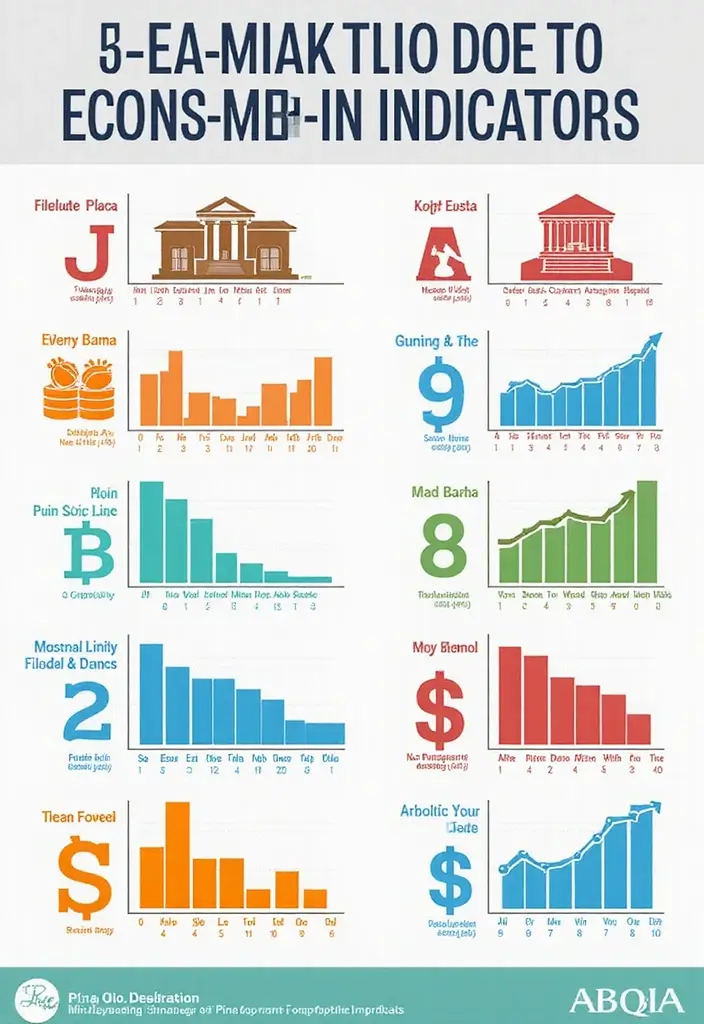Navigating the Indian share market can feel like stepping into a labyrinth, especially for first-time investors. But fear not! With the right guidance and strategies, you can confidently make your way through. This collection of 27 insightful tips is designed to arm you with the knowledge you need for wiser investments. Each tip is crafted to demystify the complexities of stock trading and offer practical advice that resonates with beginner investors. From understanding stock market basics to honing your market analysis techniques, you’ll find everything you need right here.
Whether you’re looking to dabble in equities or engage in serious financial planning, this article is your companion on the journey to financial literacy and success. So, roll up your sleeves, grab a cup of tea, and let’s dive into these empowering insights that will set the stage for your investing adventure!
1. Understand the Basics of the Share Market

Before you start investing, it’s crucial to understand the fundamentals of the share market. The stock market is a platform where shares of publicly traded companies are bought and sold. Think of it as a bustling marketplace filled with buyers and sellers looking to trade. Familiarize yourself with key terms like shares, dividends, bull market, and bear market. Understanding these concepts lays a solid foundation for your further journey.
– Shares: A share represents a portion of ownership in a company.
– Dividends: The portion of earnings distributed to shareholders.
– Bull Market: A period when stock prices are rising.
– Bear Market: A period of declining stock prices.
Grasping these basics strengthens your confidence to make informed decisions in your investing path.
2. Set Clear Investment Goals

Effective investing starts with setting clear and realistic goals. Ask yourself why you want to invest in the stock market. Are you saving for retirement, funding your dream home, or building a college fund? Knowing your objectives helps shape your investment strategy and keeps you focused.
– Short-term goals: These could include saving for a vacation or a major purchase.
– Mid-term goals: Think about buying a car or funding a wedding.
– Long-term goals: Retirement planning or wealth accumulation over decades.
Once you have clearly defined goals, you can decide on the type of investments that align with your time frame and risk tolerance. Without goals, it’s easy to lose direction and make impulsive decisions.
3. Diversify Your Portfolio

The age-old saying, “Don’t put all your eggs in one basket,” rings especially true in investing. Diversification is a strategy that involves spreading your investments across various sectors and asset classes to minimize risks. If one area underperforms, others can potentially compensate.
– Equities: Invest in stocks of different companies across various sectors.
– Mutual Funds: These allow you to invest in a diversified portfolio with professional management.
– Bonds: Consider adding fixed-income securities for stability.
A well-diversified portfolio not only cushions against market volatility but also enhances the chance of securing consistent returns over time. This strategy is essential for any investor looking to mitigate risks while aiming for substantial rewards.
4. Research Before You Invest

In the world of investing, knowledge is power. Before making any investment decisions, dedicate time to research. Understanding a company’s fundamentals, financial health, and industry position is crucial. Look into its earnings reports, balance sheets, and market trends. Also, consider external factors like economic conditions and government policies that may affect performance.
– Financial Ratios: Learn about P/E ratio, debt-to-equity ratio, and return on equity.
– Market Trends: Keep an eye out for trends influencing the sectors you’re interested in.
– Company News: Stay updated on recent developments and announcements.
Using this information, you can make educated guesses on which stocks may rise and those that might fall, effectively reducing the chances of loss.
5. Start Small and Build Gradually

As a first-time investor, it’s wise to start small. Investing in smaller amounts allows you to gain experience and confidence in the market without risking significant capital. You can gradually increase your investments as you become more familiar with market dynamics and your own risk tolerance.
– Begin with Blue-chip Stocks: These are shares of established companies known for their reliability.
– Utilize SIPs: Systematic Investment Plans in mutual funds permit you to invest small amounts regularly.
– Keep Learning: Each investment experience is a chance to learn, so embrace the journey.
By starting small, you can mitigate potential losses and gradually build a robust portfolio that can withstand market fluctuations.
6. Understand Market Trends

Understanding market trends can significantly enhance your investment decisions. Trends refer to the general direction in which the market or a particular stock is moving. Knowing how to identify trends—whether bullish (upward) or bearish (downward)—can help you make timely investment choices.
– Technical Analysis: Learn to read charts and graphs to understand price movements.
– Moving Averages: Use simple and exponential moving averages to gauge potential support and resistance levels.
– Volume Analysis: Look at trading volume trends to understand market sentiment.
Staying attuned with the market dynamics ultimately empowers you to invest smartly, maximizing your chances of profit while minimizing risks.
7. Monitor Your Investments Regularly

Investing is not a set-and-forget strategy. Regularly monitoring your investments is crucial to assess performance and make necessary adjustments. Market conditions can change rapidly, and what seemed like a good investment yesterday may not hold the same value today.
– Set Alerts: Use stock market apps to set price alerts and notifications.
– Review Performance: Evaluate your portfolio’s performance against your goals and benchmarks.
– Stay Informed: Keep up with news that could affect your investments.
Consistent monitoring allows you to remain proactive rather than reactive, enabling you to make informed decisions that align with your investment strategy.
8. Don’t Let Emotions Cloud Your Judgment

Emotions can be a detrimental factor in investing. Panic selling during a market dip or overly exuberant buying during a bull run can lead to poor decisions. Developing a rational mindset is essential for a successful investing journey. Stick to your strategy and resist the urge to react impulsively to market fluctuations.
– Create a Plan: Have a detailed investment plan to guide your decisions.
– Stay Disciplined: Adhere to your plan even when the market urges you to do otherwise.
– Seek Support: Engage with communities or forums of like-minded investors for advice and encouragement.
By managing your emotions, you can maintain clarity and make sound investment decisions that align with your long-term goals.
9. Utilize Technology and Tools

In today’s digital age, there are countless tools and apps designed to simplify investing. Utilize technology to enhance your trading experience and make informed choices. These resources can provide insights, real-time data, and analytical tools that help you stay ahead in the market.
– Stock Market Apps: Popular platforms like Zerodha, Upstox, and Groww offer easy trading solutions.
– Charting Software: Use tools like TradingView or MetaTrader for advanced technical analysis.
– News Aggregators: Apps like Moneycontrol or Economic Times help keep you updated with financial news.
Leveraging technology can make your investment journey much smoother and more efficient, empowering you to navigate the stock market with ease.
10. Stay Educated on Economic Indicators

Economic indicators such as GDP growth, inflation rates, and employment data play a crucial role in shaping the stock market. Being aware of these indicators enables you to make informed predictions about market movements. For instance, rising inflation may impact consumer spending and corporate profits, which in turn affects stock prices.
– Key Indicators: Pay attention to GDP, unemployment rate, inflation rate, and interest rates.
– Market Sentiment: Understand how these indicators affect investor sentiment and market trends.
– Regular Updates: Stay updated with economic reports released by the Reserve Bank of India and other financial bodies.
Understanding these indicators can empower you to make smarter investment decisions and anticipate market shifts proactively.
11. Learn from Your Mistakes

Every investor encounters losses at some point. Instead of viewing mistakes as failures, consider them valuable learning experiences. Analyzing where things went wrong can lead to insight and improvement in your investing strategy. Embrace the journey, including the ups and downs.
– Keep a Journal: Document your trades and the reasoning behind each decision.
– Reflect on Losses: Analyze why a particular investment didn’t perform as expected.
– Adjust Your Strategy: Use your learnings to refine and improve your future investment decisions.
By learning from your mistakes, you’re cultivating a mindset that encourages growth and resilience, which are key to long-term success.
Every misstep in the share market is a stepping stone to success. Embrace your losses, jot down your lessons, and watch your investing strategy evolve!
12. Consider Professional Advice

If you feel overwhelmed or unsure about your investment decisions, seeking professional guidance can be a wise choice. Financial advisors or wealth managers can provide tailored advice based on your financial goals and risk tolerance. They can help you create an investment strategy that aligns with your objectives.
– Research Advisors: Look for certified professionals with good reputations.
– Understand Their Fees: Be aware of any fees or commissions associated with their services.
– Communicate Clearly: Share your goals and concerns to get the best advice possible.
Professional advice can offer peace of mind and ensure that your investments are managed with expertise, ultimately leading to better financial outcomes.
13. Avoid Timing the Market

Trying to time the market can be a hazardous strategy for many investors. Predicting short-term market movements is incredibly challenging, even for seasoned professionals. Instead of attempting to time your investment entries and exits, focus on a long-term investment strategy.
– Dollar-Cost Averaging: Invest a fixed amount regularly regardless of market conditions.
– Stay Invested: Long-term investments often yield better returns than trying to capitalize on short-term market fluctuations.
– Minimize Emotional Trading: Resist the urge to react impulsively to daily market changes.
By committing to a long-term approach, you can weather market volatility while allowing your investments to grow over time.
Timing the market is like chasing shadows; instead, embrace a long-term strategy. Regular investments and staying the course often yield the best returns. Remember, patience is a key ingredient in mastering the share market in India!
14. Explore Different Investment Avenues

While stocks are a popular choice, there are various investment avenues to consider. Exploring different options can enhance your portfolio and reduce risks. From mutual funds to real estate, understanding different avenues can help you make diversified choices.
– Mutual Funds: These are professionally managed investment funds that pool money from multiple investors.
– ETFs: Exchange-traded funds offer a way to invest in a collection of assets, similar to mutual funds, but they trade like stocks.
– Real Estate: Investing in property can provide both income and appreciation.
Exploring various avenues helps you to strategically optimize your investments while balancing risks and rewards.
15. Use Stop-Loss Orders

A stop-loss order is a risk management tool that can protect your investments from excessive losses. By placing a stop-loss order, you can set a predetermined price at which your shares will automatically be sold if the market price drops below that level. This can be particularly useful in volatile markets.
– Limit Losses: Set stop-loss orders to minimize your potential losses.
– Automatic Execution: This ensures your shares are sold without you needing to monitor the market constantly.
– Flexible Strategy: Adjust your stop-loss levels as your investments grow to lock in profits while safeguarding against declines.
Using stop-loss orders can significantly enhance your risk management strategies, allowing for a more disciplined approach to trading.
16. Reinvest Your Dividends

Reinvesting dividends can be a powerful strategy to grow your investment portfolio over time. Instead of cashing out your dividend earnings, consider using them to purchase additional shares of the same stock or reinvesting in other opportunities. This compounding effect can dramatically increase your wealth in the long run.
– Automated Reinvestment: Many brokerage accounts offer automatic reinvestment plans that simplify the process.
– Compounding Growth: Reinvesting allows you to purchase more shares, leading to higher future dividend payouts.
– Long-Term Strategy: This approach aligns perfectly with long-term investment goals, harnessing the power of compounding.
Embracing the habit of reinvesting dividends can set you on a path to financial success.
Reinvesting dividends is like planting seeds for your financial future. Over time, those little investments can grow into a flourishing portfolio. Don’t cash out—let your wealth bloom!
17. Have a Long-Term Perspective

Stock market investments are best approached with a long-term perspective. The market naturally experiences ups and downs, but historically, it has shown an upward trend over extended periods. By maintaining a long-term view, you’re more likely to ride out market fluctuations and capitalize on the overall growth trends.
– Patience is Key: Avoid knee-jerk reactions to daily market changes.
– Focus on Goals: Keep your long-term goals in mind to stay motivated.
– Historical Performance: Research past performance trends to understand potential future growth.
Investing isn’t a sprint; it’s a marathon. Cultivating patience and a long-term mindset can lead to significant financial rewards.
Investing in the share market is like planting a tree; it takes time to grow. Stay patient, focus on your long-term goals, and watch your investments flourish over the years!
18. Use Tax-Advantaged Accounts

Utilizing tax-advantaged investment accounts can significantly enhance your returns. Accounts like the National Pension System (NPS) or Equity Linked Savings Scheme (ELSS) offer tax benefits while allowing you to invest in equities. These accounts help you save for retirement or long-term goals while minimizing tax liabilities.
– NPS: A government-backed scheme that offers tax deductions for investments.
– ELSS: A mutual fund category that comes with a lock-in period but provides tax deductions.
– Public Provident Fund (PPF): A long-term savings scheme that also offers tax benefits.
Leveraging these accounts can multiply your investing effectiveness while providing essential tax breaks.
19. Stay Updated on Regulatory Changes

The Indian stock market is influenced by various regulations set by bodies like the Securities and Exchange Board of India (SEBI). Staying updated on regulatory changes can help you understand how these changes may impact your investments. New rules can affect market conditions, trading practices, and compliance requirements.
– Follow News: Regularly check financial news outlets for updates on regulations.
– Join Forums: Engage with fellow investors in forums to gain insights on legislative changes.
– Consult Experts: Seek professional advice if regulations seem complex.
By keeping abreast of regulatory changes, you can position yourself better and make necessary adjustments to your investment strategy.
20. Network with Other Investors

Networking with other investors can provide valuable insights and experiences. Engaging in discussions can broaden your perspective and introduce you to new ideas. Whether through social media groups, investing clubs, or seminars, connecting with like-minded individuals can foster learning and support.
– Join Online Communities: Participate in forums like Reddit’s r/stocks or financial Facebook groups.
– Attend Workshops: Look for local seminars or webinars on investing topics.
– Share Experiences: Exchange stories of successes and failures to learn from each other.
Building relationships with fellow investors can offer a treasure trove of knowledge and help you stay motivated on your investment journey.
21. Learn Technical Analysis

Technical analysis is a powerful tool that helps investors make decisions based on price movements and trading volumes. By understanding chart patterns, trends, and indicators, you can predict future price movements. This can be particularly useful for short-term trading strategies.
– Candlestick Patterns: Learn about different candle formations that indicate market sentiment.
– Support and Resistance Levels: Identify key price levels where stocks tend to reverse.
– Indicators: Familiarize yourself with tools like MACD and RSI to gauge momentum.
Gaining knowledge in technical analysis can refine your investment strategy and help you time your trades more effectively.
22. Avoid High-Frequency Trading

High-frequency trading (HFT) involves executing numerous trades in a very short time frame, usually for small profits. While it can be lucrative for some professional investors, it’s risky and not typically suitable for beginners. Instead, focus on a longer-term investment strategy that aligns with your financial goals and comfort level.
– Understand Risks: Be aware that HFT can lead to significant losses if not properly managed.
– Stick to Your Plan: Avoid the temptation to chase quick profits.
– Choose Quality Investments: Prioritize long-term value over short-term gains.
Focusing on sustainable investment strategies is smarter than chasing fleeting opportunities that may lead to losses.
23. Be Prepared for Market Corrections

Market corrections are a natural part of investing. A correction occurs when stock prices drop by at least 10% from recent highs. Understanding that these fluctuations are normal can help you remain calm and avoid rash decisions. Prepare for corrections by having a well-thought-out strategy.
– Maintain Cash Reserves: Keep some cash handy to take advantage of lower prices during corrections.
– Stay Educated: Understand the reasons behind market fluctuations to better manage your investments.
– Don’t Panic Sell: Resist the urge to sell out of fear during a correction; instead, stick to your investment plan.
By anticipating market corrections, you can navigate them wisely and possibly turn them into an opportunity.
24. Evaluate Performance Periodically

Periodic evaluation of your investment portfolio is essential to ensure it aligns with your financial goals. Set aside time—monthly or quarterly—to review performance and make adjustments as necessary. This practice helps you stay on track and improves your decision-making process.
– Performance Metrics: Analyze your returns against benchmarks and your original goals.
– Rebalance Asset Allocation: Adjust your portfolio to maintain your desired level of risk and diversification.
– Identify Underperformers: Decide whether to hold, sell, or buy more of certain stocks based on performance.
Regular evaluations keep you informed and prepared to adapt to changing market conditions.
25. Be Mindful of Fees

Investment fees can eat into your returns over time. Being mindful of fees associated with trading, mutual funds, or advisory services is crucial for maximizing your overall gains. By selecting low-cost investment options, you’re allowing more of your money to work for you.
– Brokerage Fees: Look for platforms with low or no trading fees.
– Expense Ratios: In mutual funds, check the expense ratios to ensure you’re not overpaying.
– Advisory Fees: Understand the fee structure of any financial advisor to avoid surprises.
Choosing investment options with lower fees can greatly enhance your long-term investment performance.
26. Keep a Backup Plan Ready

In the ever-changing landscape of the share market, having a backup plan can safeguard your investments. Whether it’s setting a financial trigger to exit a position or having an emergency fund to fall back on, being prepared can cushion against unforeseen circumstances.
– Set Exit Strategies: Know when to sell if an investment is underperforming.
– Emergency Fund: Maintain a separate fund for unexpected expenses to avoid withdrawing from your investments.
– Market Alerts: Set alerts for significant market changes that would affect your strategy.
By having a backup plan, you can navigate challenges more effectively while keeping your investments secure.
27. Celebrate Your Wins

Finally, don’t forget to celebrate your victories, no matter how small! Acknowledging your achievements can bolster your confidence and keep you motivated on your investment journey. Whether it’s reaching a financial milestone or simply making a wise investment decision, take a moment to appreciate your progress.
– Reflect on Progress: Look back on your growth as an investor.
– Reward Yourself: Treat yourself occasionally to celebrate successes.
– Engage with Community: Share your wins with fellow investors for encouragement and support.
Celebrating your wins keeps investors engaged and inspired to continue pursuing their financial goals.
Conclusion

Navigating the share market in India as a first-time investor can be both exciting and daunting. By incorporating these 27 tips into your investment strategy, you can build a strong foundation for your financial future. Remember, every investor’s journey is unique, so tailor these insights to suit your personal goals and circumstances. Keep learning, stay informed, and let your investment journey unfold!
Share this article with your friends, and let’s start a conversation about investing smarter together!
Frequently Asked Questions
What Are the Basics I Should Know Before Investing in the Indian Share Market?
Before diving into the Indian share market, it’s essential to grasp the fundamentals of stock trading. Understand what a share is, how the stock market operates, and the types of orders you can place. Familiarize yourself with terms like bull markets, bear markets, and market capitalization to build a solid foundation for your investing journey.
How Can I Set Realistic Investment Goals?
Setting realistic investment goals starts with asking yourself what you want to achieve. Are you saving for retirement, a new home, or your child’s education?
Make your goals SMART: Specific, Measurable, Achievable, Relevant, and Time-bound. This clarity will help you stay focused and motivated as you navigate the share market in India.
What Does Diversifying My Portfolio Mean, and Why Is It Important?
Diversifying your portfolio means spreading your investments across various sectors and asset classes to reduce risk. Think of it as not putting all your eggs in one basket! By diversifying, you can protect yourself from market volatility and enhance potential returns over time. It’s a key strategy for any investor, especially in the dynamic Indian share market.
How Often Should I Monitor My Investments?
Monitoring your investments is crucial, but the frequency can vary based on your strategy. For long-term investors, quarterly reviews might suffice, while active traders might check their portfolios daily.
Regular monitoring helps you stay informed about market trends and make timely adjustments to your strategy, ensuring that your investments align with your financial goals.
What Are Some Effective Market Analysis Techniques for Beginners?
As a beginner, you might find both fundamental analysis and technical analysis valuable. Fundamental analysis involves evaluating a company’s financial health, including its earnings, revenue, and market position. On the other hand, technical analysis focuses on price movements and trading volumes to predict future trends.
Combining these techniques can provide a comprehensive view of potential investments in the Indian share market.
Related Topics
share market tips
investing strategies
beginner investors
equity investments
market analysis
financial planning
diversification strategies
long-term investing
stock market basics
Indian share market
investment tools
risk management







